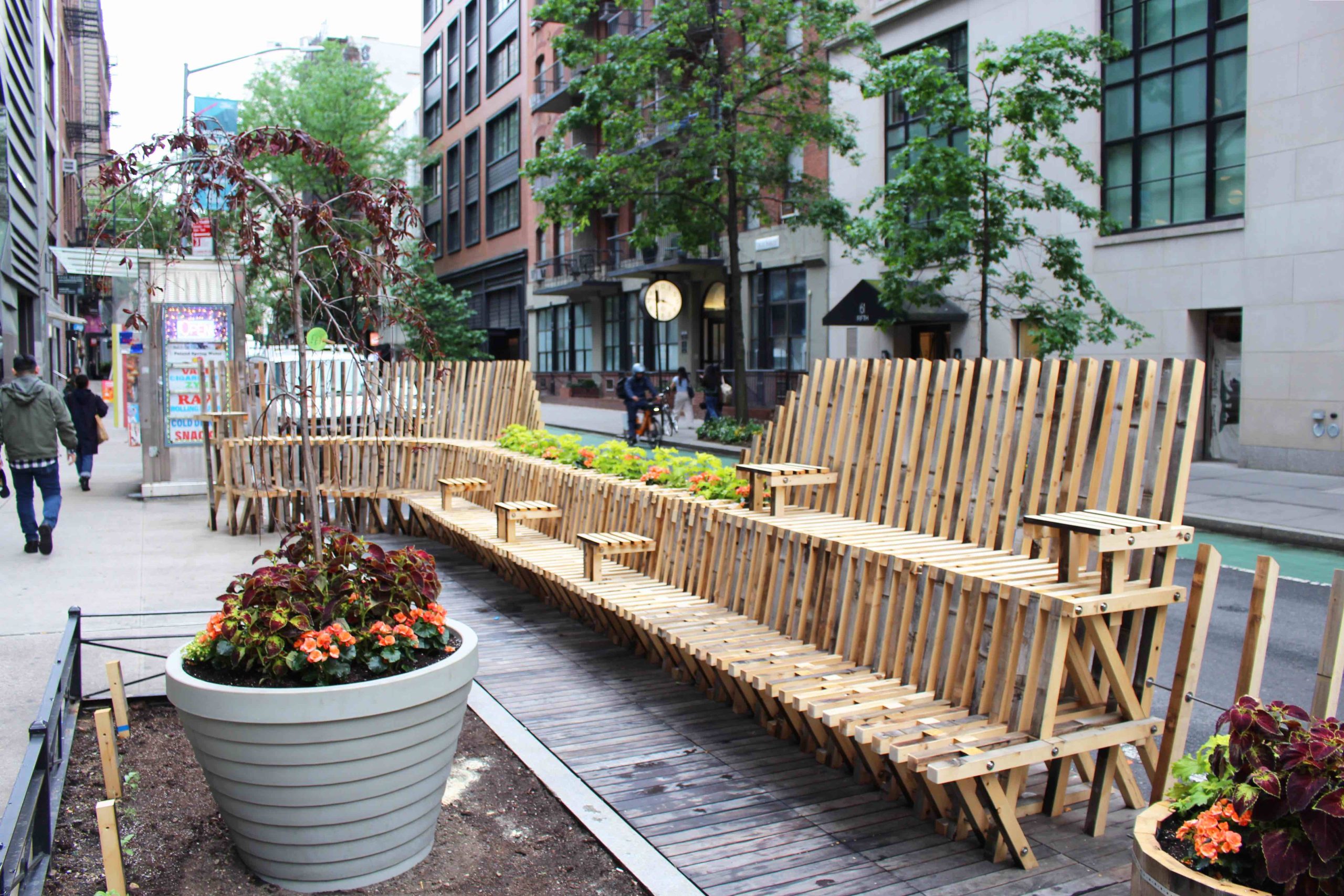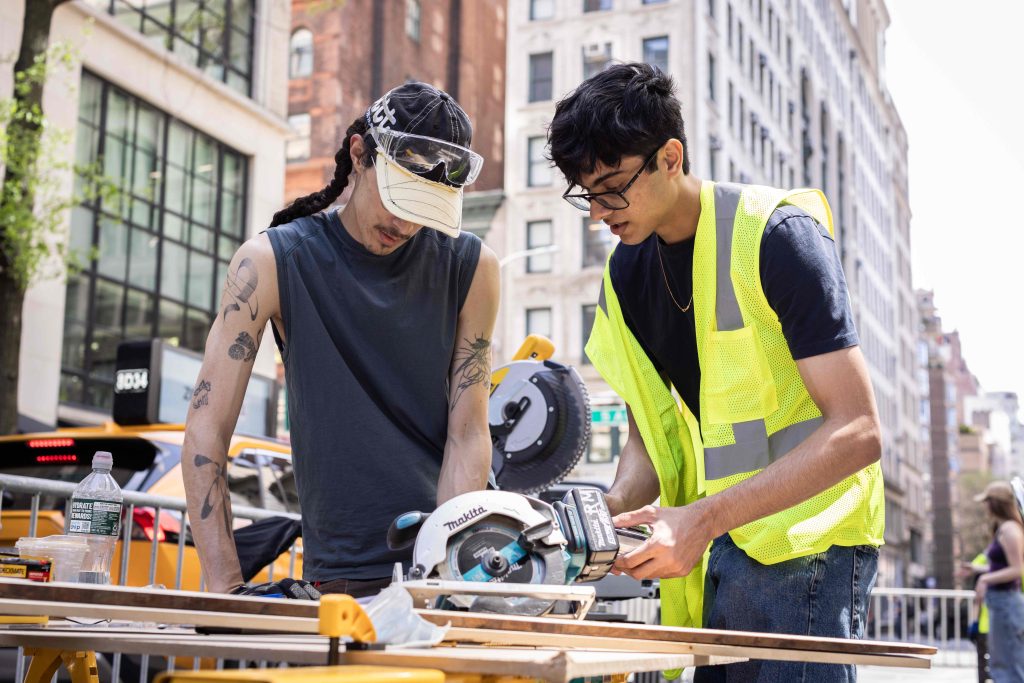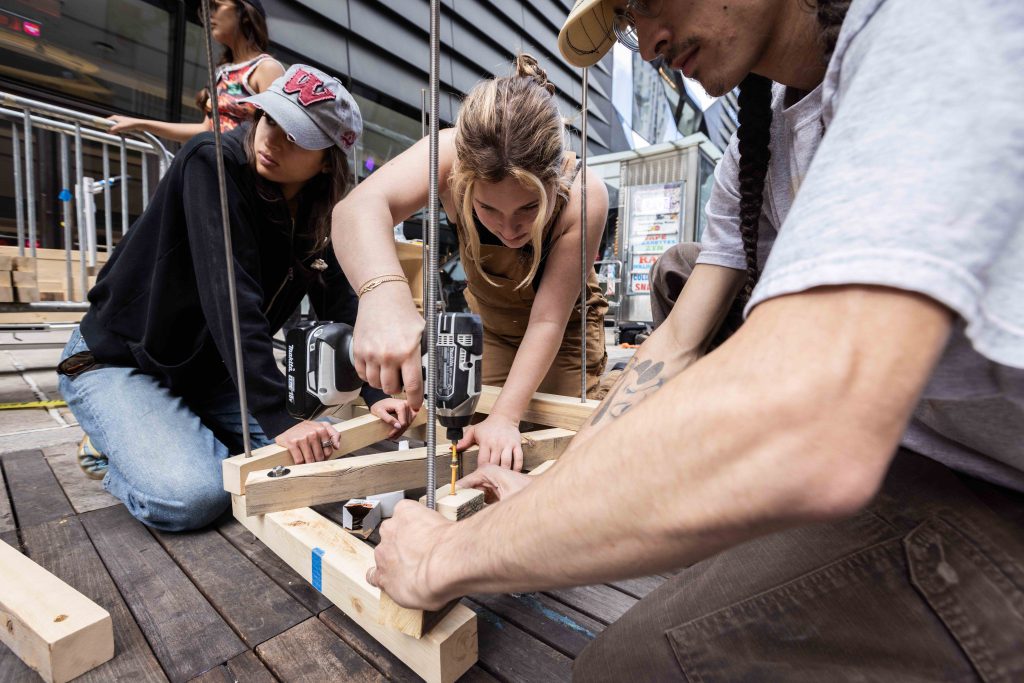
Parsons Students Design and Create Street Seats Project in Collaboration with the NYC Department of Transportation
Thanks to the New York City Department of Transportation, public seating in the form of benches and leaning bars is abundant in the city, and can be found in parks, outside subway and bus stops, inside libraries, and more. The DOT also has a program called Street Seats, that encourages local partners to transform underused streets into vibrant, social, public spaces during the warm weather months.
Recently, in partnership with the NYC DOT, new seating was installed at the North East corner of 13th street and 5th avenue, courtesy of a Design Build: Urban Public Space course at Parsons, which is more commonly referred to as the Street Seats elective. This year’s class came up with a sustainable, reusable model made entirely from reclaimed watertower cedar wood that came from Tri-Lox, a Brooklyn-based workshop and mill.
Faculty members Ross Myren and Maya McGlynn led the class, setting the design parameters through the exploration of reclaimed wood as the primary seating material, emphasizing Parsons’ commitment to sustainability and circularity in design.
“The challenge was to guide the students in both designing and building the project within the span of the semester, given the limited timeframe of the project,” shares Myren and McGlynn. “We had a field-trip to Tri-Lox where the students saw lots of the material first-hand, but also the different ways that reclaimed materials could be processed. It is very important to us in our teaching that we prioritize and contribute to a circular economy around building materials, especially those local to New York City.”


Students creating the installation on-site
Throughout the course, students considered the flow of traffic and of pedestrians, body ergonomics, and various other site-specific environmental conditions in their design process. To arrive at the final design, students first began with individual speculations through physical modeling, then organized their models by likeness to form design pairs and then progressively larger teams. By the midterm, two groups of students had proposed different models, liked elements of both, and spent the remainder of the course finalizing one concept.
“Initially, we planned for design to end and fabrication to begin, yet the process ended up being much more of an overlap,” explain Myren and McGlynn. “The students divided themselves into two primary teams: the design team, who focused on refining the construction details, drawing the plans, elevations and assembly drawings which would all be necessary for DOT sign-off, and the fabrication team, who focused on developing full-scale prototypes to test the design, gaining familiarity working with and processing the material, and ultimately feeding real results back into the design concept.”
The students were especially inspired by the reclaimed cedar that had come from various decommissioned water towers. The wood was all different sizes and thicknesses, which meant students worked in the Making Center to cut the wood into the sizes they needed, while also improving the quality of the wood by removing rot and nails.



“For the structure itself, the students were really interested in preserving the patina of the original watertower, so you can see one side that maintains this aged texture and the other sides that reveal the process and labor of transforming them,” says Myren and McGlynn. “The assembly process allowed for everyone to be involved as well, for mistakes to happen and be celebrated and then corrected. Where the double-height seating transitions to single-height seating, the students included an embedded planter, made just of horizontal strips (cutoffs from the processing) that spanned between the modules. This both allowed for the incorporation of vegetation as well as serves as a signifier that people cannot sit on the second level (where the plants are) because there is also no fall protection there.”
The Street Seats installation will be up until November, and will then be disassembled and re-designed by a new class of students for a new site. The Parsons community will work with the NYC DOT to select said site, and aim to make sure there is no waste from the project as it goes on to live another life.
